San José de la Laguna Mission and Convento
Introduction
Text-to-speech Audio
Also known as Laguna Pueblo, this mission was established in 1699, making it one of the oldest structures in New Mexico. The Mission focused not just on converting the local Keres Indians, but to also educate them and introduce more modern farming. It would appear much success took place since the Keres people valued education and intellectual activity. Many well educated Keres people (also known as people of Laguna Pueblo) came out as result over the next few hundred years. The church/parish and school are still in operation.
Images
Laguna Pueblo, 1879
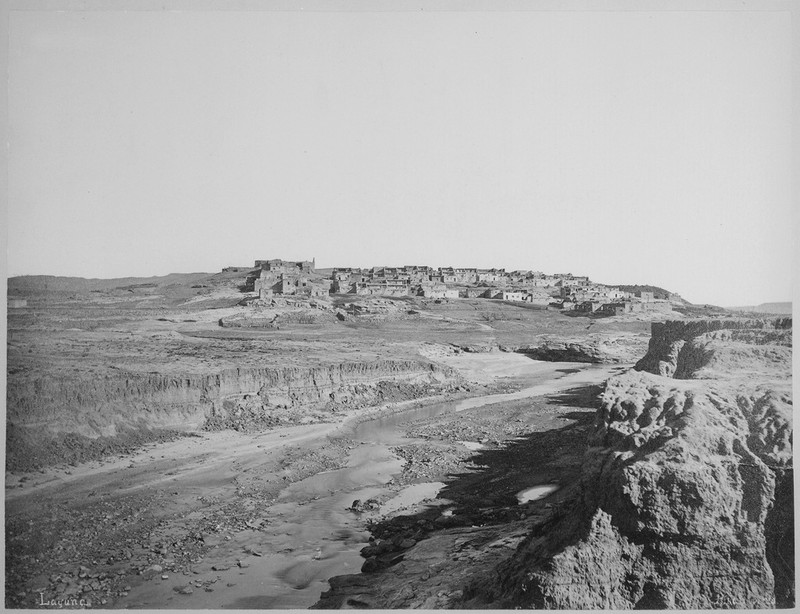
Door to Baptistry, 1934
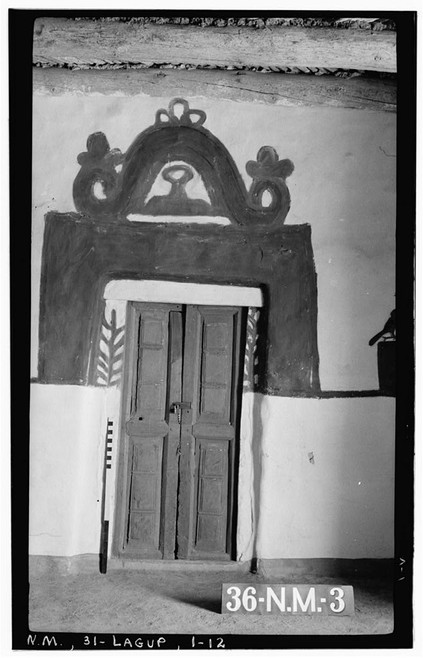
Laguna man and woman in traditional clothing
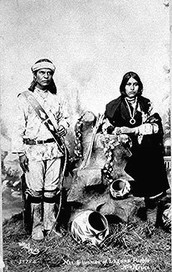
1930s-1940s photo of the mission
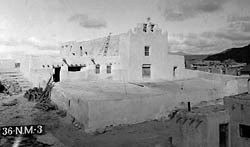
San José de la Laguna Mission and Convento as it appears today
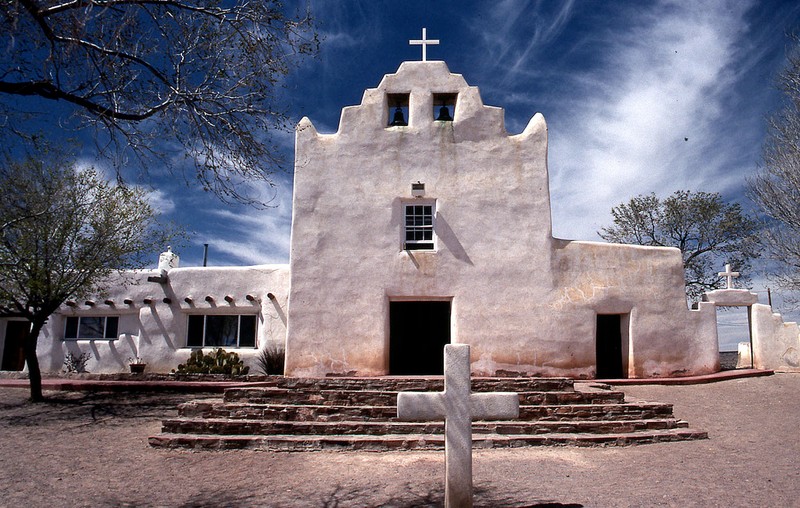
Backend of mission, 1930s-1940s
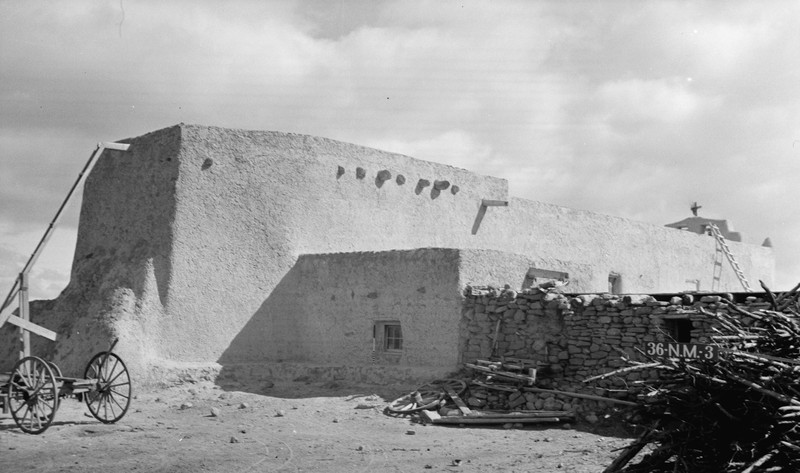
Floor plan of the mission
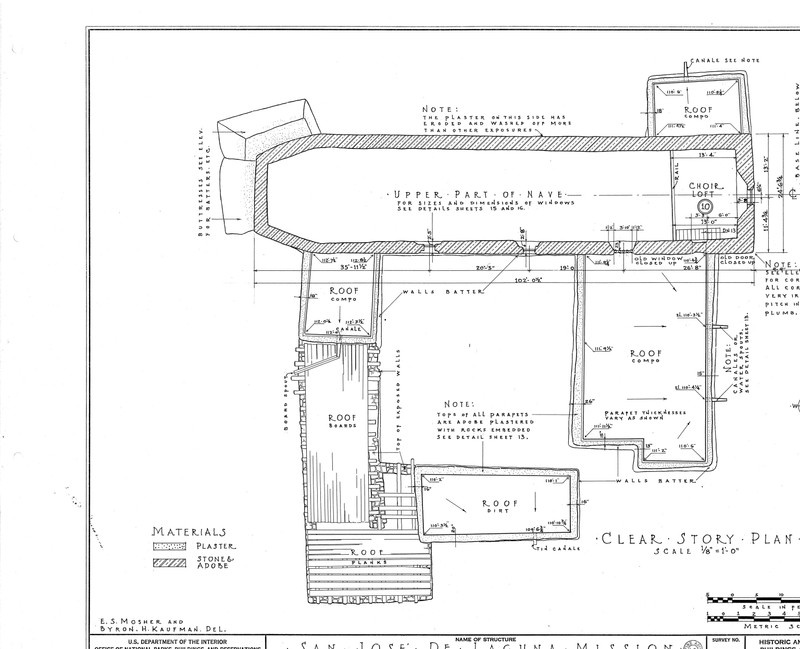
Backstory and Context
Text-to-speech Audio
The people of Laguna Pueblo—known as Kawaika in the Keresan language—have a long history of residing in and farming along the Rio San José in west-central New Mexico. Laguna history begins in time immemorial long before the advent of written records in the Southwest.
The Laguna Pueblo is federally recognized Native American tribe of the Pueblo people in west-central New Mexico, USA. The name, Laguna, is Spanish (meaning "small lake") and derives from the lake located on their reservation. Originally, this body of water was the only lake in what is now the state of New Mexico, and was formed by an ancient dam that was constructed by the Laguna people. The population of the tribe exceeds 7,000 enrolled members, making it the largest Keresan-speaking tribe. After the Pueblo Revolt of 1680-1696, the Mission San José de la Laguna was erected by the Spanish at the old pueblo (now Old Laguna), and finished around July 4, 1699. It is a common misconception that the Pueblo of Laguna began in 1699, at the time of the construction of the Mission. However, diligent research of 1,449 archaeological sites and an anthropological analysis of the Laguna oral history have firmly proven that the indigenous Laguna people have inhabited the area ranging from 6500 B.C. to the present.
The Laguna people value intellectual activity and education, so a scholarship program has led to many well educated Lagunas. Uranium mining on Pueblo of Laguna land has contributed to this scholarship program as well as to skilled labor learning among Laguna members. Lagunas and other Pueblos enjoy baseball. Like many Pueblos, the Laguna people are skilled in pottery.
Laguna Construction Company, a construction company owned by the Pueblo of Laguna, is one of the largest U.S. contractors in Iraq, with reconstruction contracts worth more than $300 million since 2004. In addition to its headquarters at the pueblo, Laguna Industries, Inc. maintains offices in Albuquerque, New Mexico; San Antonio and Houston, Texas; Baghdad, Iraq, and Amman, Jordan. In 2007, Laguna Construction employed 75 people, most of whom belong to the pueblo.
The Acoma Pueblo and Pueblo of Laguna have many ties, including location, language and a shared high school. The Pueblo of Laguna has a well-established Tribal Law system. The Pueblo of Laguna has participated as a "Weed and Seed" tribe. This Department of Justice program studied the enforcement of law and effectiveness of social programs on Native American lands.
Their reservation lies in parts of four counties: In descending order of included land area they are Cibola, Sandoval, Valencia and Bernalillo Counties. It includes the six villages of Encinal, Laguna, Mesita, Paguate, Paraje and Seama, and had a total population of 3,815 persons as of the 2000 census. The reservation is 45 miles west of the city of Albuquerque. The reservation consists of approximately 500,000 acres.
The Irish surname Riley was adopted by many members of the Laguna tribe in the 1800s, for legal use in European-American culture, while they retained their Laguna names for tribal use.
The Laguna Pueblo (and the Acoma Pueblo) lie in the river basin of the Rio San Jose. The laguna or lake was historically much larger than the present time and hosted waterfowl of many kinds, including ducks, geese and swans. The Rio San Jose flows into the Rio Puerco near the southeast corner of the Laguna Reservation.
Primary and middle school education is provided by the Laguna Department of Education, which also operates Early Childhood program and adult education programs. The high school is shared with nearby Acoma Pueblo.
The Laguna Pueblo (and the Acoma Pueblo) lie in the river basin of the Rio San Jose. The laguna or lake was historically much larger than the present time and hosted waterfowl of many kinds, including ducks, geese and swans. The Rio San Jose flows into the Rio Puerco near the southeast corner of the Laguna Reservation.
Primary and middle school education is provided by the Laguna Department of Education, which also operates Early Childhood program and adult education programs. The high school is shared with nearby Acoma Pueblo.
The Laguna Development Corporation; founded in 1998, is a wholly owned subsidiary of the Pueblo of Laguna. Laguna Development is a federally chartered tribal corporation formed under Section 17 of the 1934 Indian Reorganization Act.
The company develops and operates the tribe's retail-based outlets, including two travel centers, a supermarket, a convenience store, an RV park, an arcade, a Superette and three casinos on the Pueblo of Laguna reservation that spans Cibola County, Bernalillo, Valencia and Sandoval counties.
Several Laguna Pueblo businesses are along tourist and truck route corridors that attract New Mexico tourists, long- and short-haul truck drivers, and residents of nearby Albuquerque. Other Laguna Development businesses provide basic services to local tribal communities.
Sources
Keleher, Julia M.; Chant, Elsie Ruth (2009). The Padre of Isleta: The Story of Father Anton Docher. Sunstone press Publishing
Pritzker, Barry M. A Native American Encyclopedia: History, Culture, and Peoples. Oxford: Oxford University Press, 2000.
Ellis, Florence Hawley (1979). Handbook of American Indians. Washington, D.C.: Smithsonian Institution. pp. 438–441.
Ferguson, T.J. and Mills, Barbara J., 2012, Supplemental Report: Archaeological Sites on the Laguna Indian Reservation. Unpublished paper on file at the Pueblo of Laguna Tribal Historic Preservation Office.
"Pueblo of Laguna-owned contractor is 15th largest in Iraq : Iraq War : Albuquerque Tribune". Abqtrib.com. November 30, 2007.
Molhausen, Balduin (1858). Diary of a Journey from the Mississippi to the Coasts of the Pacific V2, with a United States Government Expedition (1858). Jane Sinnett (translator). London: Longman, Brown, Green, Longmans, & Roberts. p. 60.
Pritzker, Barry M. A Native American Encyclopedia: History, Culture, and Peoples. Oxford: Oxford University Press, 2000.
Ellis, Florence Hawley (1979). Handbook of American Indians. Washington, D.C.: Smithsonian Institution. pp. 438–441.
Ferguson, T.J. and Mills, Barbara J., 2012, Supplemental Report: Archaeological Sites on the Laguna Indian Reservation. Unpublished paper on file at the Pueblo of Laguna Tribal Historic Preservation Office.
"Pueblo of Laguna-owned contractor is 15th largest in Iraq : Iraq War : Albuquerque Tribune". Abqtrib.com. November 30, 2007.
Molhausen, Balduin (1858). Diary of a Journey from the Mississippi to the Coasts of the Pacific V2, with a United States Government Expedition (1858). Jane Sinnett (translator). London: Longman, Brown, Green, Longmans, & Roberts. p. 60.
